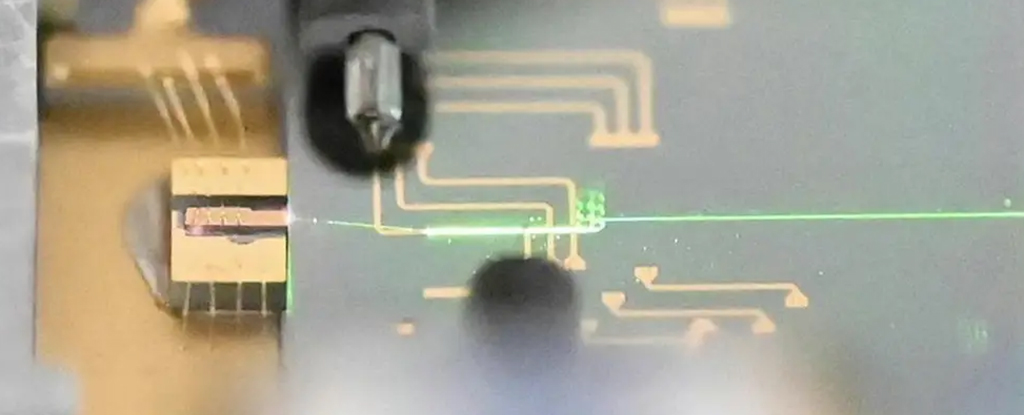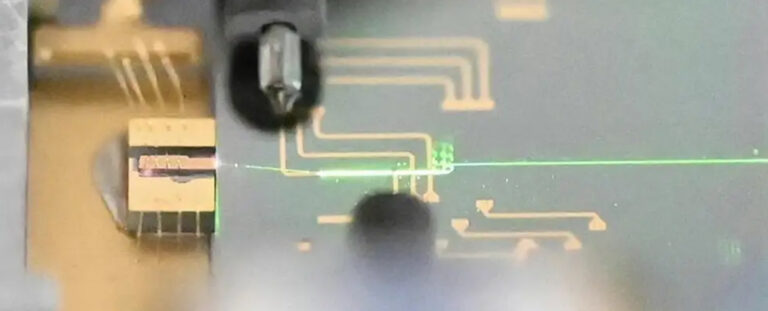Compact Ultrafast Laser Remarkably Small, Fits on a Fingertip
In order to accurately measure the Universe on the smallest scales, a laser with the perfect combination of power and precision is required. However, most lasers capable of this task are bulky, expensive, and consume a significant amount of power.Fortunately, scientists at the California Institute of Technology (Caltech) have developed an innovative solution that could change this. They have created a laser that is capable of producing ultrashort pulses, all while fitting on a fingertip.
The potential applications for these compact lasers are vast. They can be used in medical imaging, atomic clocks, and even for navigation purposes without relying on GPS. In any situation where high-speed laser pulses are necessary, these small yet powerful instruments can be of great assistance.The reduced size of these lasers is not just a novelty. By making this technology more compact, it opens up a world of possibilities for new uses. These lasers can now be easily integrated into other devices that can fit into pockets or bags, making them highly portable.
Physicist Qiushi Guo, from Caltech and the City University of New York, explains the goal behind this innovation: “Our aim is to revolutionize the field of ultra-fast photonics by transforming large lab-based systems into chip-sized ones that can be mass produced and deployed in various settings. We not only want to make things smaller, but also ensure that these chip-sized lasers deliver exceptional performance.”

These lasers, known as mode-lock lasers or MLLs, generate incredibly fast laser pulses by synchronizing different laser frequencies and phases. These pulses occur in femtoseconds, which are equivalent to quadrillionths of a second.
Observations at smaller scales and of faster-moving objects, like atoms in a molecule, can be made possible with quicker laser pulses. However, the current state of the art in MLLs is limited by their large size and high energy requirements.
To address this challenge, the team utilized thin-film lithium niobate (TFLN), a material that allows for precise control of laser pulses using external radio frequency electrical signals. By combining this material with a laser-friendly semiconductor, they were able to create a super-small laser on a chip.The results were remarkable, with the laser capable of producing a pulse lasting 4.3 picoseconds (trillionths of a second) in the near-infrared range, and reaching a peak power of approximately half a watt.
Furthermore, the versatility of the finished laser was impressive, as it could be finely tuned and potentially integrated into portable, hand-held devices. The next step involves determining how to make this a reality.Not only can lasers serve as instruments for measurement, but they can also have a significant impact on the surrounding environment. The researchers involved in this miniaturization process envision a promising future for their creation.
Guo states that this accomplishment sets the foundation for the future utilization of cell phones in diagnosing eye diseases or examining food and environments for substances such as E. coli and harmful viruses. Furthermore, it has the potential to facilitate the development of advanced chip-scale atomic clocks, enabling navigation in situations where GPS is compromised or inaccessible.
This article is republished from sciencealert under a Creative Commons license. Read the original article.
Do not forget to share your opinion with us to provide you with the best posts !




0 Comments